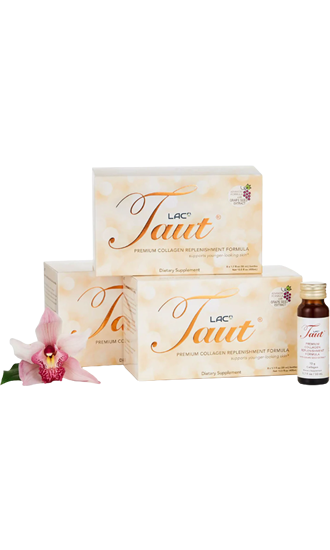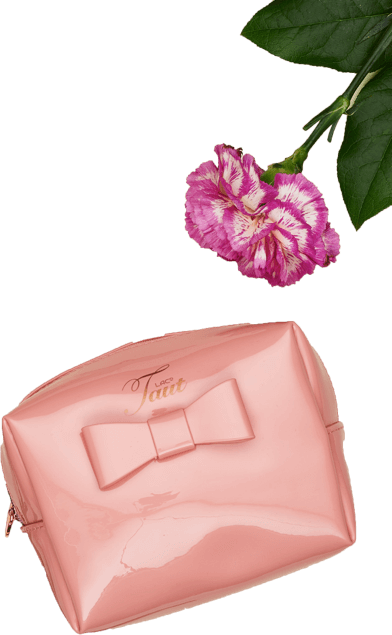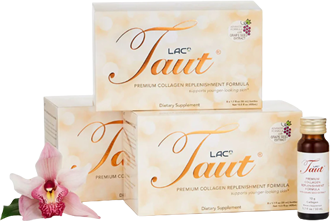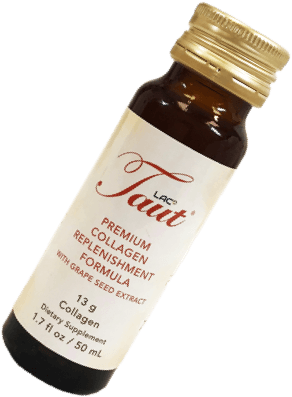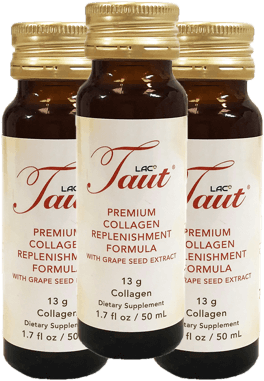Crows Feet: How to Get Rid of Crow Eyes & Wrinkles
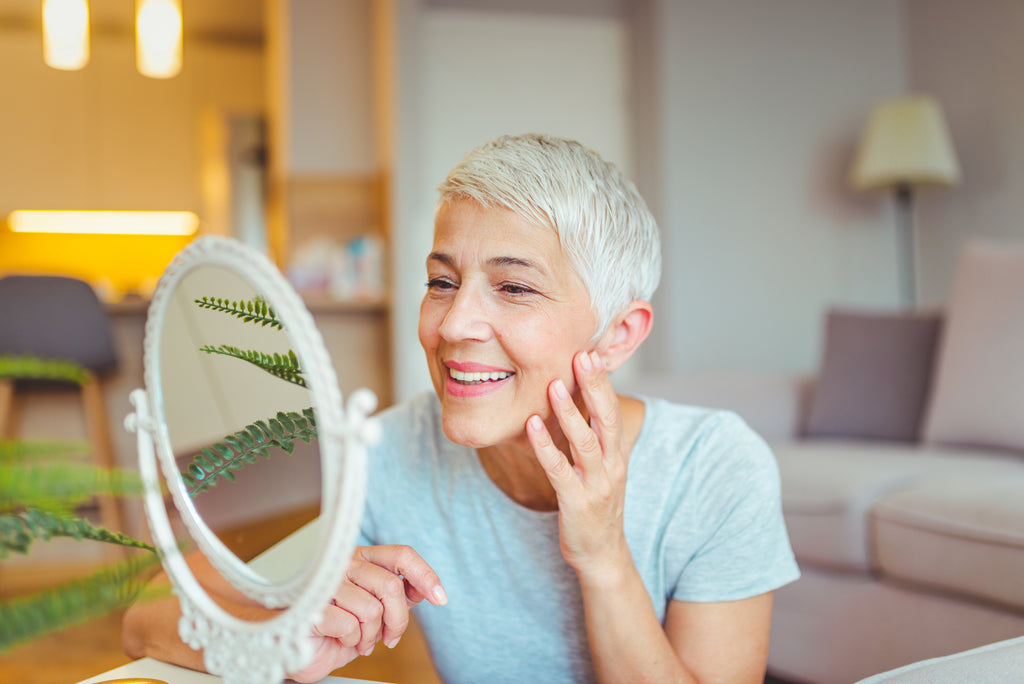
There’s some truth to the saying, ‘the eyes are the window to the soul.’ Our eyes can reveal our emotions, characteristics, and even details of our lives, like how many hours we slept last night. Certainly, supermodel Tyra Banks would agree with us, considering she credits her lucrative career to her signature ‘smize.’
Above all, one of the first things that our eyes give away about us is our age.
After years of expressing almost every emotion in the book, the delicate skin around our eyes starts to crease and crinkle. When you make certain facial expressions, you may only see these wrinkles temporarily. But, the older we get, the more our skin refuses to bounce back from these movements - turning a momentary muscle contraction into a permanent mark on our face.
These wrinkles have such a distinct look to them - almost like a bird’s footprint - that they are most commonly referred to as ‘crow’s feet.’
But, what are crows feet exactly, and what causes them? In this article, we’ll take a closer look at these pesky wrinkles and how, with the right skincare, we can lessen their appearance to keep our skin looking smooth and youthful for many years to come.
More helpful reading: Under eye wrinkles
What Are Crow’s Feet?
Whether you call them ‘character lines,’ ‘expression lines,’ or plain old ‘crow’s feet,’ one thing is for sure: They are not a welcome addition to our complexion.
But, what are they exactly? In essence, crow’s feet are the wrinkles that form around the corners of our eyes. Similar to laugh lines (which are the lines that develop around the nose and mouth), repetitive muscle contraction is one of the main culprits of these deep wrinkles and what gives crow’s feet their unmistakable appearance.
Although you probably notice crow feet more when you express intense emotions like elation or anger, even the slightest muscle contraction in your face can cause crow’s feet and fine lines around your eyes. In fact, a number of famous celebrities are known for not smiling in order to stave off expression lines and wrinkles to preserve their sleek, wrinkle-free complexion.
Now, we’re not saying that you need to go to such extremes to ward off laugh lines and wrinkles. After all, they are an inevitable and completely natural part of the aging process (yes, even celebrities get crow’s feet).
Crow’s feet are not created in a day. It takes years and years for our dermis to fall prey to crow’s feet. And, although we can’t erase these stubborn lines, there are a few ways that we can slow the appearance of crows feet wrinkles and improve the skin around the eye (Hint: It’s not all about eye cream).
But first, before we go into how to prevent crow’s feet, we’ll need to understand more about the underlying causes of these pesky creases so we can reduce their appearance as much as possible.
More helpful reading: Marionette lines
What Causes Crows Feet? (On Face)
Now that we’ve answered the question ‘what is crow’s feet?’ let’s get to the bottom of why they form on our skin. As we’ve previously mentioned, crow lines are the wrinkles that develop around the corners of our eyes, but there are only a few small differences that separate crow’s feet from the other wrinkles on our skin.
While our everyday facial expressions and muscle contractions can cause wrinkles on our faces, there are certain environmental factors that determine the fate of our complexion and the appearance of wrinkles and crow's feet. How? It all has to do with two little proteins that affect our skin in a big way: Elastin and collagen.
But, before we dig a little deeper into some of our favorite proteins in the body (and how we can use them to our advantage to prevent crow’s feet), you’ll need to know more about the skin. Specifically, that it’s made up of three main layers:
- Epidermis - This is the visible, outermost layer of the skin. It helps defend the body from infection, UV rays, and pathogens in our environment. It also regulates how much water is stored in the dermis, through transepidermal waterloss.
- Dermis - You can thank this layer for its ability to grow hair, make oil (in the oil glands) that keeps your dermis moist and smooth, and create sweat. The dermis is where blood vessels, nerve endings, and proteins (elastin and collagen) are located. It plays a big role when it comes to the number, depth, and appearance of fine lines and wrinkles, including in the areas where we have crow’s feet.
- Hypodermis - The bottom-most layer of the skin is the subcutaneous fat which is what keeps our dermis attached to our bones and muscles. It helps protect us when we fall and can influence how apparent our wrinkles look.1
The damage that causes crow’s feet primarily affects the deeper layers of the skin - not just what we see in the mirror. And, when we diminish and prevent crow’s feet from within, results can be effective and long-lasting.

More helpful reading on skin blemishes and their causes here.
How Do Collagen & Elastin Affect Crow’s Feet?
So, how do proteins play a part in all of this? Essentially, they support the strength, density, shape, and elasticity of your skin. If your skin is a house, these proteins are the frame - they are perfectly designed to make sure your skin’s structure is sturdy and doesn’t collapse.
More specifically, this is what these proteins do in the body:
- Collagen - You can think of collagen as the glue that keeps your skin together. It’s a structural protein that helps the skin maintain its shape. You need collagen to keep your complexion looking firm, plump, and healthy. How much collagen to take?
- Elastin - This protein is found mostly in the dermis layer of the skin. It’s what allows your skin to bounce back into place when pinched or stretched, like an elastic band.2, 3
As with any house, years of wear and tear can affect both the exterior appearance and the interior frame. When our dermis is exposed to things like UV rays and pollutants, our essential skin proteins start to break down.
What makes matters worse is that as we age our bodies don’t produce as much collagen and elastin as they used to. We produce about 1% less collagen every year after the age of 20. This means that as these proteins begin to break down, our bodies are unable to replenish them as they once did.4
While a 1% reduction in collagen may not seem like much, it’s significant when we realize that collagen alone makes up 75-80% of our dermis. So, as our collagen levels reduce, we start to see a serious difference in the quality of our skin. Plain and simple, less collagen means more wrinkles and more crow’s feet.5
Find out more about the benefits of collagen here.
What Makes These Wrinkles Different? (How We Develop Crow’s Feet)
Crow’s feet are one of the first signs of aging to take up precious real estate on our faces. Why? The area around our eyes is especially susceptible to damage because it is much more delicate than the rest of the skin on our face. This is why we not only experience wrinkles like crow’s feet in the eye area, but also dark circles, hyperpigmentation, crepiness, and sagging.
Furthermore, this delicate skin contains fewer oil glands, which means that the dermis is often drier than the rest of our face. And, dry skin is more susceptible to wrinkles.
So, delicate, dry skin, mixed with repetitive, involuntary muscle movements, and fewer essential skin proteins leave us with one thing: Crow’s feet.
More helpful reading: Over 50 skin care routine
How To Get Rid Of Crow’s Feet At The Dermatologist’s Office
Dermal Fillers & Botox For Crow Feet (Eye Area Treatment)
A sure-fire way to get rid of crow’s feet around the eyes and prevent more from forming is with injectables, such as dermal fillers and Botox. While dermal fillers can reduce the appearance of crow’s feet, wrinkles, and fine lines by filling in the eye area, Botox takes a different approach to minimize laugh lines.
What Botox does is relax the muscles around your eyes. This limits the extent of your muscle contractions when you make a facial expression. And, when you are not able to contract the muscles in your face as much as you used to, you reduce the appearance of fine lines and prevent new crow’s feet from forming.
This doesn’t mean you need to choose between filler and Botox. Instead, some patients opt for both beauty treatments - Botox first, fillers second. Why? If crow’s feet are still apparent after a round of Botox, dermal fillers can finish the job by smoothing out fine lines in the skin around your eyes.
Unfortunately, treating crow’s feet with collagen injections, fillers, and Botox, is not entirely without side effects. Since the dermis on the sides of your eyes is very thin and sensitive, one wrong move with the needle and you may experience complications like dizziness, droopy eyelids, swelling, headaches, and double-vision.6, 7
More helpful reading:
https://www.renewskinco.com/blogs/i/dermal-fillers-crepey-skin-2019-guide
Laser Resurfacing To Treat Crow’s Feet & Wrinkles
Did you know that you can zap your crow’s feet away? Laser resurfacing is an effective treatment option for getting rid of the appearance of crow’s feet and other age-exposing lines.
While lasers won’t control muscle contraction like Botox can, certain lasers can actually resurface the dermis by producing a whole new layer of skin packed with collagen and elastin fibers to rejuvenate the area where your crow’s feet, eyes, and eyelids all meet.
And, although you don’t have to go to the top dermatologist in New York City to get your laser resurfacing done, we do recommend finding a highly-qualified doctor to take care of your crow’s feet, if you do choose this method.
The only downside of this option is the pain and discomfort you will have to go through as the laser works its magic on your dermis. Patients who have undergone laser resurfacing usually compare the feeling of the laser to a rubber band repeatedly snapped against the skin. So, depending on your personal pain tolerance this may or may not be the best option for you.
More helpful reading: How to increase collagen on face
Chemical Peels (Salicylic & Glycolic Acid) For Crow’s Feet
If you want to press the ‘restart’ button on your complexion, a great way to do that is with a chemical peel. How does it work? Think of a chemical peel as a deep exfoliation that is able to - quite literally - peel back the layers of your dermis to reveal younger, smoother, and healthier-looking skin.
While you may find at-home chemical peel products that claim to have the same results, nothing compares to the strong formulas the professionals use in-office.
The downside to chemical peels? Major discomfort and lots of downtime. Your dermis will need plenty of rest and recovery time while your new skin comes to the surface. The amount of time that your dermis needs to recover will depend on your skin type and the type of peel that was performed.
While you may only need around 4 to 7 days to recover from a light chemical peel, your face may require at least 2 weeks to recover from the severe burning and inflammation from a deep chemical peel.8
Although it’s best to rely on the professionals when looking for a rejuvenating solution for your skin, some products, like our Taut Intensive Recovery Serum, can recover your skin from fine lines and wrinkles, without the downtime.
That’s because this luxurious serum is formulated with 7 botanical herbal extracts that have proven antioxidant and anti-inflammatory properties that repair the dermis from stress and environmental damages. Not only does the serum promote skin radiance, clarity, and firmness, but it also strengthens the skin’s protective barrier against free radicals - which is something a chemical peel can’t do.
At-Home Treatments For Crows Feet (Under Eyes)
Vitamin C Eye Creams & Moisturizers
Vitamin C, also known as ascorbic acid, is more than just a nutrient that helps keep cold and flu symptoms away. It’s a popular skincare ingredient that can help you prevent crow’s feet and improve the overall quality of your skin.
Ascorbic acid is an antioxidant that is essential to the dermis because it helps offset damage to your skin cells from free radicals. This means that it not only helps prevent damage from UV exposure, but eye creams that contain ascorbic acid promote protein production in the dermis. And, the creation of these new proteins helps delay the appearance of crow’s feet and make them far less noticeable.
But, that’s not all an eye cream or eye serum containing ascorbic acid can do. As an added bonus, these beauty products can help lighten hyperpigmentation and dark circles under and around the eye area.
More helpful reading:
Retinoids (Eye Creams & Gels)
One of the gold-standard beauty product ingredients for erasing crow’s feet and other wrinkles from your face are retinoids. Retinoids, which are a form of vitamin A, are able to treat and prevent many of the most common skin problems because they encourage skin cell turnover. Retinoids are a go-to beauty and health treatment for dermatologists with patients who experience conditions like acne and hyperpigmentation. But, retinoids don’t stop there. An eye cream or eye serum that contains vitamin A stimulates protein production within the dermis, reversing signs of aging, such as crow’s feet.9
While this is undoubtedly a great solution to nip crow’s feet in the bud, keep in mind that while using retinoid beauty products, your dermis will become more sensitive to UV exposure. Therefore, it’s important to wear sunscreen during the day, especially during peak sunlight. If not, you could end up doing more harm than good and worsening the appearance of crow’s feet in the long-term.
Read more about treating crow's feet with K-beauty eye creams here.
Face Masks & Dermal Treatments For Crow’s Feet
While your everyday skincare routine can determine the fate of the skin around your eyes, you won’t want to forget to use skin treatments and masks for an extra nutrient boost. Over time, the right kinds of masks can heal the damage caused by free radicals and tighten crow’s feet.
Although some people turn to natural, DIY home remedies made out of egg whites, coconut oil, lemon juice, and the best essential oils for skin, the active chemicals in these ingredients (like linoleic acid and citric acid) may not be enough to have a lasting effect - especially if you have deep wrinkles in the skin around your eye area.
In order to get rid of crow’s feet or at least minimize the appearance of fine lines and dark circles in the skin around the eye, we prefer face masks that actually stimulate collagen production, like our Taut Collagen Mask.
What makes this face mask different from your average DIY concoction or even some of the most popular sheet masks on the market is its formula.
This mask is specifically formulated with hydrolyzed collagen, hyaluronic acid, botanical squalene, and vitamin C to target sagging skin caused by dehydration, free radical damage, fatigue, and UV rays. The rich collagen essence smooths fine lines and wrinkles (yes, even those stubborn lines around the eyes and mouth) while giving you instant radiance and glow.
Thinking of giving yourself a facial at home? Read our facial steps article.
Our Top 5 Beauty Tips To Prevent Crow’s Feet Around The Eyes
Stay Out Of The Sun (Avoid UV Exposure)
If there’s one thing that you can do right now that will keep your skin looking noticeably younger it’s this: Wearing sunscreen.
Protecting your dermis from sun exposure with a full-spectrum, mineral or chemical-based sunscreen is your best bet against signs of aging. Not only can applying sunscreen daily slow the progression of crow’s feet, but it can also benefit your skin by protecting your dermis from free radical damage that causes age spots, wrinkles, fine lines, and even some cancers. Need we say more?
More helpful reading:
https://www.renewskinco.com/blogs/i/how-to-get-rid-of-jowls
Maintain A Healthy Diet
‘You are what you eat,’ is certainly true when it comes to your skin. What you eat on a day to day basis can determine the look, feel, and health of your complexion. To support healthy-looking, age-defying skin, you’ll want to follow a few (if not all) of these diet tips:
- Eat more
- Include some nuts and seeds
- Enjoy healthy fats at every meal
- Don’t rely on a diet plan
- Get plenty of antioxidants
- Drink more water and drink less alcohol
- Choose foods that are good for your skin (nutrient-dense, whole foods)
More helpful reading:
https://www.renewskinco.com/blogs/i/is-alcohol-bad-for-your-skin
Keep Your Skin Hydrated
One way to keep your crows feet, eyes, and complexion looking their best is by making sure your skin is always well-hydrated. Whether that means including more humectants, like hyaluronic acid, into your regimen, avoiding harsh cleansers, applying another layer of eye cream, or creating a more regular skincare routine, having hydrated skin won’t just improve crow’s feet around the eyes, it can make your skin look younger almost instantly.
More helpful reading by RenewSkin Co: Facial serum.
Include a Hydrating Supplement To Minimize Crow’s Feet
Although it can be challenging to keep your skin looking perfectly plump all year long, supplements like our Taut Hydrate Vegan Supplement can give your dermis the extra boost it needs to achieve that glamorous glow.
The secret to this high-potency, plant-based supplement is in its unique formula. Each capsule is packed with Hyaluronic Acid and Grape Seed Extract which work synergistically to super-hydrate your skin.
While Hyaluronic Acid acts as a moisture magnet, filling in and hydrating your skin from within, the antioxidants in Grape Seed Extract prevent free radical damage, which can cause hyperpigmentation, crow’s feet, wrinkles, and certain cancers.
Because it’s a supplement and not an eye cream, it’s able to work from the inside-out to fill in free spaces between the protein fibers in your dermis, minimizing the look of crow’s feet. In as little as 4 weeks, you’ll start to notice improved firmness, smoothness, and an overall healthier complexion.
More helpful reading: How often should I get a facial?
Get Your Eyes Checked
‘What’s crows feet have to do with eye health?’ you may wonder.
Well, any sort of muscle contraction in your face can have an impact on the future of your skin, especially when those movements are repetitive. This is especially true with squinting. If you notice that you have been squinting more than you used to while reading on your phone or having trouble seeing a street sign while driving, you might need to get your eyes checked.
With a new pair of glasses or an updated prescription, you can minimize the amount of time that you spend squinting - ultimately relaxing the muscles around the eyes, and keeping crow's feet at bay.
Put Down The Cigarettes
You don’t need us to tell you that smoking is bad for you. It’s common knowledge at this point that smoking negatively impacts your health, but did you know that it also causes crows eyes and makes wrinkles worse?
No amount of eye cream can save your complexion from the damage from tobacco. Whether sparking up a cigarette is part of your daily routine or you only enjoy the occasional puff, you’re undoubtedly opening the door to free radical damage, cancers, and all sorts of skin problems - crow’s feet included!
More helpful reading on smoking & lips.
Crow’s Feet Are No Match For Taut Collagen Skincare
Now that we’ve answered the question ‘what is crows feet?’ hopefully you’ve learned a little bit more about the skin’s aging process and the steps you can take to enjoy a healthy, glowing, and smooth complexion that’s free of crow’s feet, for many years ahead.
While following all of the above steps is a great start to getting your crow’s feet under control, there is one more step that you can include in your daily routine to upgrade your complexion from perfect to flawless - and it starts with our Taut Collagen Anti-Oxy Foxy Kit.
This fantastic bundle pairs our top-selling Taut Premium Collagen Advanced Formula drinks with the anti-aging essential Masquelier’s French Pine Bark Extract supplement to give you results that you can both see and feel.
Our skin-enhancing drink contains a potent concentration of 13,000mg of hydrolyzed collagen derived from the scales of wild Red Snapper fish caught in the Indian Ocean. This high concentration of collagen is able to enter your bloodstream, turn on your natural ‘wound repair’ responses, and activate fibroblast skin cells to stimulate collagen production and revamp your skin.
But this drink doesn’t stop there, our anti-aging collagen formula also contains 6 key ingredients - hyaluronic acid, elastin, grape seed extract, ceramide, ascorbic acid, and vitamin b - to deeply moisturize and protect the dermis from free radicals and cellular damage, defend against premature aging effects, and to ensure you’re seeing results like luminous, youthful, and radiant skin.
It’s no coincidence that we’ve paired our collagen drink with our French Pine Bark supplement either! Dr. Masquelier’s patented and clinically-proven antioxidant formula delivers anti-bacterial, anti-viral, anti-aging, and anti-inflammatory benefits to protect and enhance your youth and vitality.
This efficacious antioxidant has been shown to be significantly more powerful than vitamin E and 20 times more powerful than vitamin C in its abilities to neutralize free radicals, eliminate toxins, and strengthen blood vessels for optimal nutrient delivery. As a result, it helps maintain healthy collagen levels throughout the body so we can enjoy more years of supple skin and a rejuvenated, youthful complexion.

Have a question about crow’s feet, collagen, or any of our transformation programs? If so, get in touch with our team today and change your skin for the better!
References
- https://www.aad.org/public/parents-kids/healthy-habits/parents/kids/skin-layers
- https://my.clevelandclinic.org/health/articles/10978-skin
- https://www.colorescience.com/blogs/learn/how-to-get-rid-of-crows-feet
- https://www.scientificamerican.com/article/why-does-skin-wrinkle-wit/.
- https://my.clevelandclinic.org/health/articles/10978-skin
- https://www.harpersbazaar.com/uk/beauty/skincare/a34611/beauty-sos-how-to-get-rid-of-crows-feet/
- https://www.healthline.com/health/botox-under-eyes#alternatives
- https://www.healthline.com/health/chemical-peels#recovery
- https://www.ncbi.nlm.nih.gov/pmc/articles/PMC2699641/




